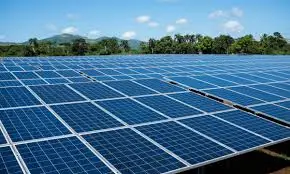New solar cell tech by IIT Bombay to sharply cut costs, enhance efficiency

In a major leap toward clean energy, IIT Bombay has developed a new solar cell that could change the future of solar power in India. This innovation aims to make solar energy cheaper and more efficient, tackling two of the biggest hurdles in renewable energy today.
The highlight of this new technology is the four-terminal (4T) silicon-perovskite tandem solar cell. It improves how sunlight is converted into electricity and reduces the cost of production. This development brings India closer to its clean energy goals.
What Makes This Technology Special?
Traditional silicon solar panels have nearly reached their efficiency limit. Most of them convert about 20–22% of sunlight into electricity. IIT Bombay’s 4T tandem solar cell crosses this barrier. It uses two materials—silicon and perovskite—to capture more sunlight.
Perovskite handles high-energy light, while silicon works well with low-energy light. When combined in a tandem setup, the cell can capture a wider range of solar energy. This results in more power output from the same panel.
The “four-terminal” design adds flexibility. Each layer works on its own, so one can upgrade or replace a part without affecting the whole cell. This reduces maintenance costs and makes the technology more durable over time.
Record-Breaking Efficiency
IIT Bombay’s new cell has achieved an efficiency rate of over 26%. In lab simulations, researchers say it could go as high as 45% with further optimization. This is a huge jump compared to standard panels.
With greater efficiency, fewer solar panels are needed to produce the same amount of electricity. That means less space, lower material costs, and easier maintenance—all important for scaling up solar adoption in India.
Slashing Solar Energy Costs
One major challenge in solar energy is the cost. The new design from IIT Bombay directly addresses this issue. Perovskite is a low-cost material and is easier to process than silicon.
Also, because the two parts of the cell can be changed separately, users won’t need to throw away the whole unit if one part fails. This cuts down waste and long-term costs.
India, with its growing energy demand and large rural population, needs such solutions. Affordable and reliable solar power could help bring electricity to areas still waiting for access.
Government and Industry Are Backing the Project
The Maharashtra government is backing a 300-megawatt pilot project using this technology. The project will be set up in Uran and aims to prove the cell’s performance on a large scale.
IIT Bombay has also partnered with Waaree Energies, one of India’s top solar companies. Together, they will work on bringing this technology from the lab to the market. Their focus includes refining the design, testing it in different weather conditions, and scaling up production.
These efforts show that India is serious about leading the world in solar innovation.
Supporting India’s Clean Energy Mission
India has pledged to get 50% of its energy from renewable sources by 2030. To meet this target, solar technology needs to be both efficient and affordable.
IIT Bombay’s new solar cells fit perfectly into this plan. With lower production costs and higher power output, they can help meet energy demands without harming the environment.
The project also supports India’s goal of becoming self-reliant in clean energy, reducing imports of fossil fuels, and creating green jobs.
A Step Toward Global Leadership
This technology doesn’t just benefit India. As the world looks for better ways to fight climate change, the demand for efficient solar panels is growing. IIT Bombay’s innovation could place India at the center of this global shift.
Countries around the world could adopt this technology to meet their renewable energy goals. If produced at scale, India could also export the technology, strengthening its role in the global clean energy market.
What’s Next?
The next steps include large-scale production, field testing, and continued research. If these cells perform well in real-world settings, they could soon be installed on rooftops, solar farms, and even small off-grid setups.
With ongoing support from the government and industry, this project could set the standard for next-generation solar energy in India and beyond.
Conclusion
IIT Bombay’s 4T silicon-perovskite tandem solar cell is a breakthrough with big potential. It offers higher efficiency, lower costs, and longer lifespan. Backed by government and industry, this innovation could play a major role in transforming how India and the world use solar energy.
As India pushes for a greener future, this solar cell could help light the way—one rooftop at a time.






